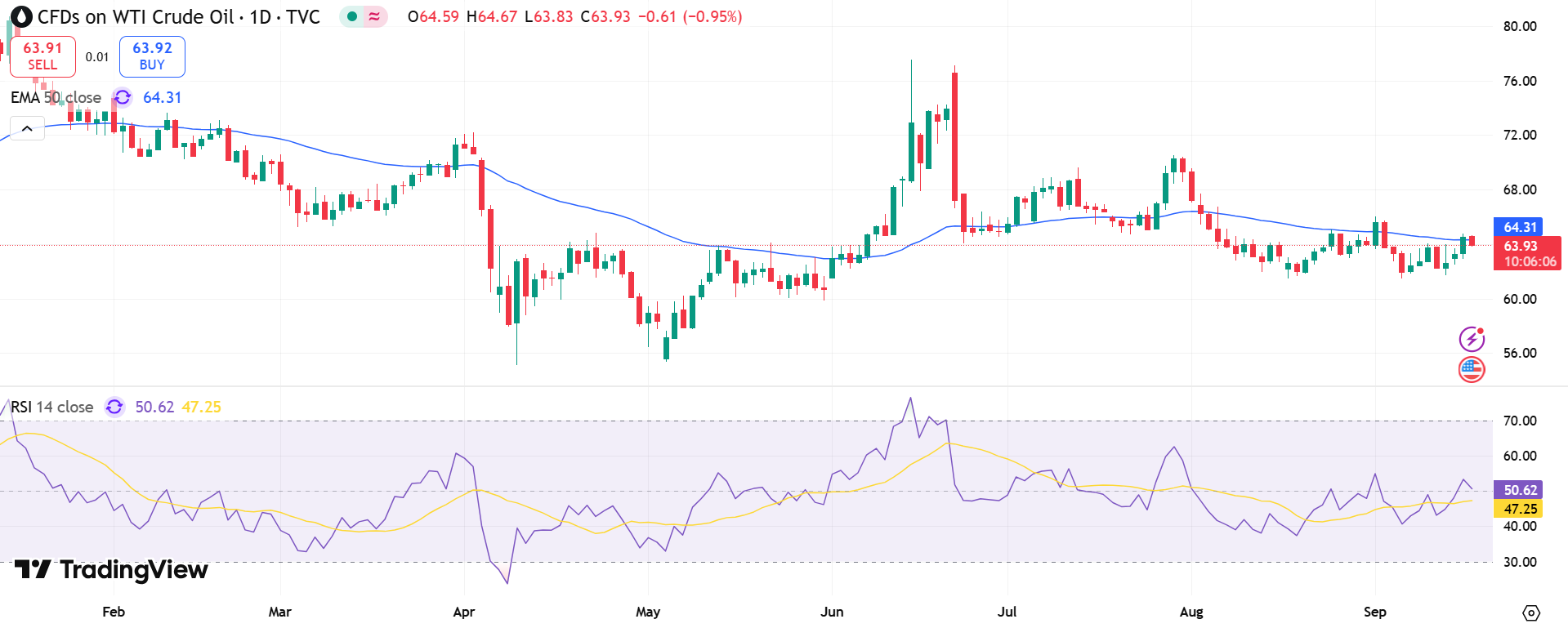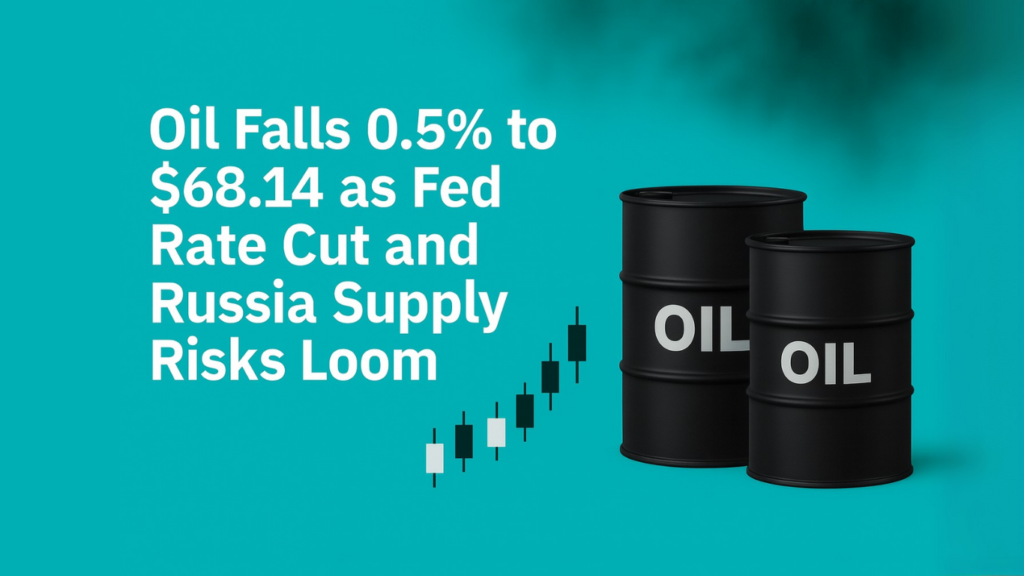Oil markets pulled back modestly on Wednesday, trimming gains from the previous session when supply concerns lifted prices more than 1%. Brent crude futures slipped 0.5% to $68.14 a barrel by 08:10 GMT, while West Texas Intermediate (WTI) crude fell 0.5% to $64.20.
Tuesday’s rally was fueled by fears of supply disruptions after Ukrainian drone strikes targeted Russian energy infrastructure, raising questions over export stability. Analysts, however, cautioned that price swings may stay within a narrow band unless damage proves sustained.
“If the drone damage turns out to be temporary, oil is likely to resume its recent $5 per barrel trading range,” said John Evans, analyst at PVM Oil Associates.
Fed Decision Could Shift Demand Outlook
Attention now turns to the U.S. Federal Reserve, which is widely expected to deliver a 25-basis-point rate cut following its two-day policy meeting ending September 17. Markets see the move as a step toward easing borrowing costs, potentially supporting fuel demand in the months ahead.
“Markets are betting on a rate cut tonight, which could lend support to demand,” noted Priyanka Sachdeva, senior analyst at Phillip Nova. “But risks remain, particularly given OPEC+’s rising output.”
The Fed meeting marks the first policy round with new governor Stephen Miran, formerly of the Trump administration, participating in deliberations. Traders will also parse Chair Jerome Powell’s comments for clarity on the pace of potential cuts into 2026.
Factors at play in near-term oil demand:
- Lower U.S. interest rates may stimulate economic activity.
- Softer borrowing costs could encourage industrial fuel consumption.
- Dollar weakness may make oil cheaper for global buyers.
Supply Risks and Inventory Trends
Geopolitical concerns continue to provide a floor for prices. Conflicts in Eastern Europe and Middle East tensions keep traders alert to sudden supply shocks. At the same time, a steady rise in OPEC+ production is expected to contribute to a global supply overhang into 2025.

Industry data adds another layer of complexity. The American Petroleum Institute (API) reported a decline in U.S. crude and gasoline inventories last week, though distillate stocks edged higher. Official figures from the U.S. Energy Information Administration are due later Wednesday. A Reuters survey of nine analysts forecasts crude stockpiles fell, while distillates and gasoline rose.
With demand signals mixed and geopolitical risks persistent, oil’s near-term direction remains tied to the Fed’s decision and the durability of Russian supply disruptions.


